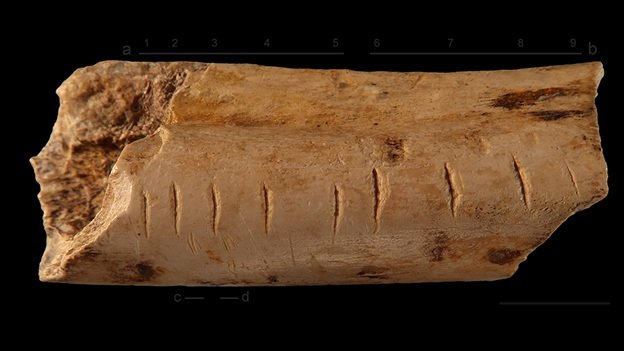Mathematics and the Art of Seeing: A Reflection on Beauty, Diversity, and Human Stories
Do you see a white vase or two black profiles? Can you shift your focus and see both? This is a classic image that never fails to ignite a sense of wonder about the intricacies of how we see and understand, prompting reflection. Recently, I find myself considering the dynamic interplay of perception, diversity, and human connection and thinking about this within the realm of mathematics. This blog delves into how our interpretations are interwoven with the threads of our unique experiences.
Recently, I traveled to New York City to visit my daughter. When my daughter and I were exploring, she stopped me and said, “Mom, look across the street. Isn’t that a fascinating moment?” She took this picture. It is such an ordinary scene that we might have kept walking. We might not have noticed anything. But that’s not what happened. We stopped and marvelled. What do you see in this picture? What is your focus? Are you drawn to anything in particular? What about the people waiting for the bus? Do you see the diversity and wonder about their stories? What we saw there in that moment went beyond impressions, inviting curiosity about perspective. As we continued walking through the city, the streets became a backdrop of contrasting narratives, and I was reminded of the multi-faceted nature of perception.
This brings me to the heart of the matter — mathematics. A subject often confined to the rigidity of right and wrong, however, it holds within it a universe of beauty, creativity, and deeply human connections.
As an example, I’d like you to take a moment and consider the number 12.
12
What do you see? What do you think? What image comes to mind? Is there a story attached to that number for you?
I think that12 is awesome! I love the number 12. Twelve has many factors making it what is called an abundant number because the sum of its proper factors is greater than the number itself. The proper factors of 12 are 1, 2, 3, 4 and 6 for a total of 16.
I also love to bake, and so twelve conjures up images of dozens cookies or doughnuts. This leads me to thinking of my grandfather, who was a baker. I feel warm inside as I recall trips to his bakery where there were dozens and dozens of amazing treats.
For me, 12 is not just a number; it's a symbol of abundance, warmth, and memories of my grandfather's bakery. Much like the kaleidoscope of reactions one can have when thinking about the number 12, each mathematical concept is an opportunity to open a window into a world shaped by personal experiences.
Given the varied reactions we all have to shapes, numbers, and equations, I wonder about the experiences of our students. Do we, as educators, take the time to uncover their stories, thoughts, and feelings that lie beneath the surface of mathematical understanding? Do we honor their stories? Do we provide a platform for exploring them? Do we seek connections? And in that, do we convey the message that everyone is a "math person," and that success is not reserved for a select few?
Afterall, mathematics is a deeply human endeavor that has existed since humans walked the earth. We see evidence of counting, of patterns, of fascination with shape and geometric figures from the most ancient of times. We can harness this as we explore mathematics with our students. When we do this, mathematics becomes a subject of connection and beauty.
Isahngo bone The artifact was first estimated to have originated between 9,000BCE and 6,500BCE
Reclaiming mathematics as a beautiful, creative, and deeply human subject demands a shift in perspective. In a landscape obsessed with test scores and timelines, the notion of how to make this shift may seem daunting, but I propose three simple yet powerful ideas:
Slow down. Assume. Talk.
Slow down - Literally pause. Ask students what they see, think and feel. This allows for a moment of reflection, an opportunity for students to connect with the material on a personal level. Assume that every student brings thoughts, ideas, and stories to the table. This fosters an inclusive environment where everyone is acknowledged as a participant in the mathematical discourse. Talking transforms mathematics, creating a space where shared reactions to mathematical concepts become a gateway to understanding each other's human stories.
The beauty of mathematics lies not just in the precision of answers but in the myriad ways it connects us as human beings. By embracing diverse perspectives, encouraging thoughtful dialogue, and recognizing the humanity inherent in mathematical concepts, we unlock the potential for a richer, more inclusive educational experience. In this shared journey of learning, where two people can look at the same thing and see something entirely different, mathematics becomes a bridge, connecting us to one another in the human experience.




